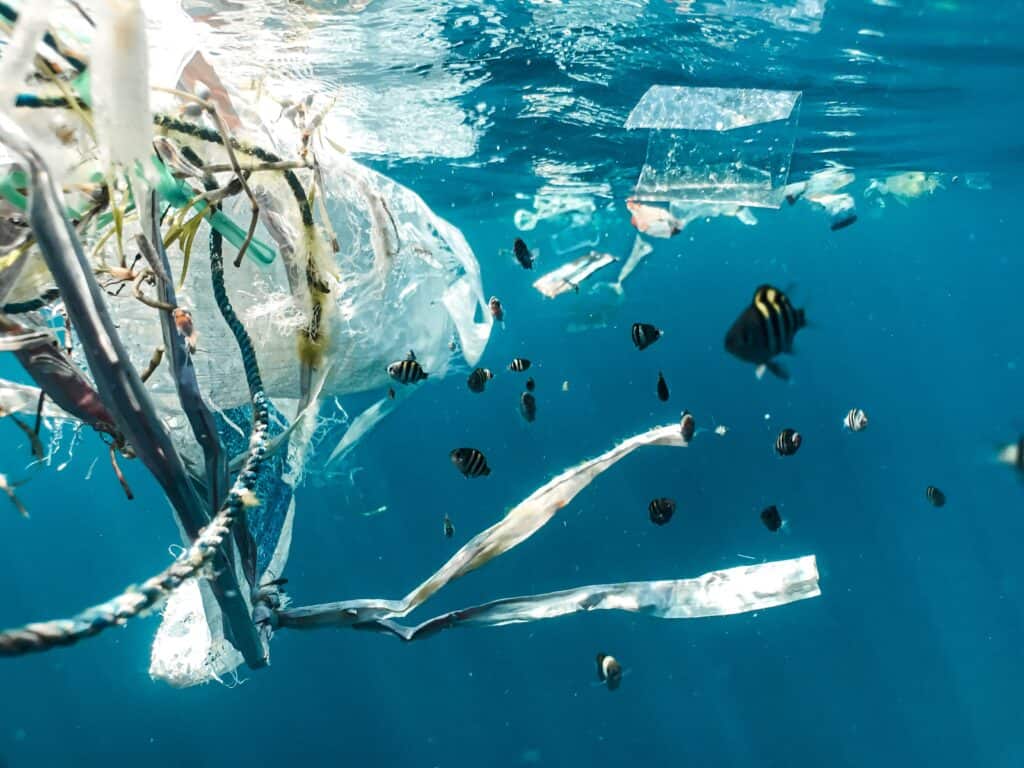This story was written on behalf of the Institute of Marine Affairs (IMA) by the Institute’s Librarian, Ms. Lorraine Barrow.
Did you know that macro and microplastics generated from land-based activities account for an estimated 80 per cent of marine debris?
Over time, beaches and coastal areas around the world have become inundated with plastic debris which has made marine plastic pollution a prominent global environmental issue.
Adversely affecting freshwater and marine ecosystems, plastic pollution also poses a serious threat to human well-being, especially when marine life ingests microplastics that subsequently enter and move through the food chain.
As the world commemorated World Earth Day on June 5, this year’s theme called for global solutions to address plastic pollution under the campaign #BeatPlasticPollution.
Looking forward, it’s important to consider strategic ways to continue addressing the issue, and technological advances in the world of Virtual Reality (VR) technology presents more opportunities to raise awareness and increase understanding.
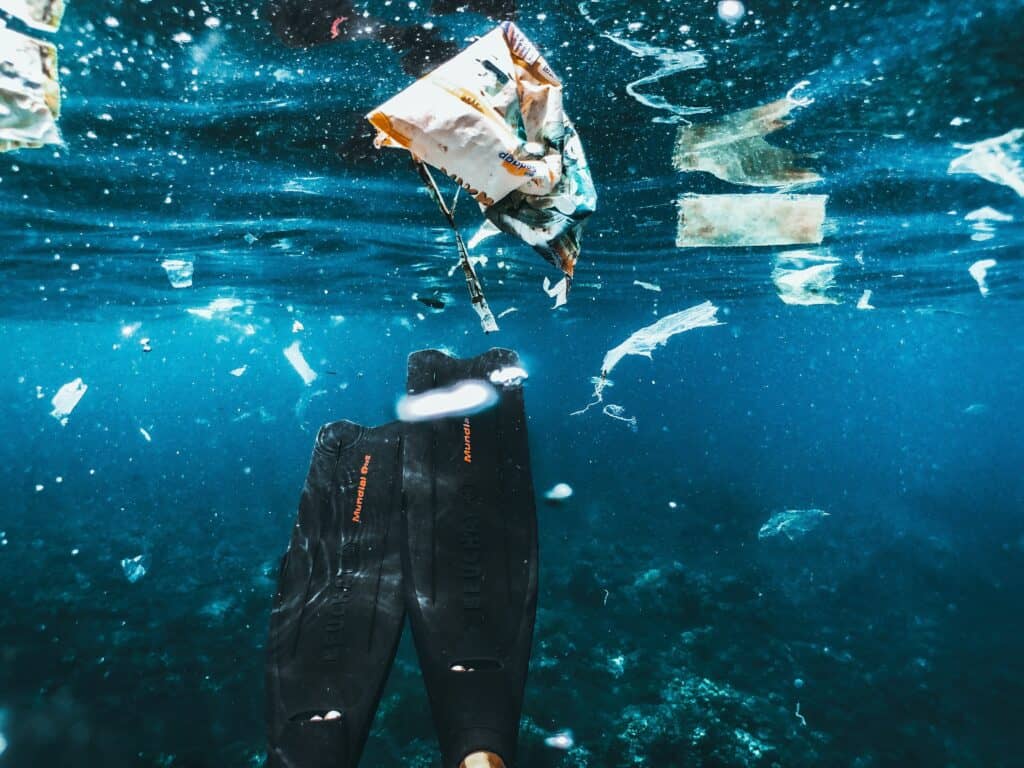
Exponential Growth of Plastics Production
In a 2021 report, the United Nations Environment Programme (UNEP) estimated that at least 400 million tonnes of plastic was produced each year in the previous decade.
At least 50 per cent of those plastics produced would have served single-use purposes which meant they would be used once and then discarded.
But in a 2022 report by the Ocean Conservancy, it was revealed that the amount of single-use plastics used increased even further during the COVID-19 pandemic given the increased use of personal protective equipment
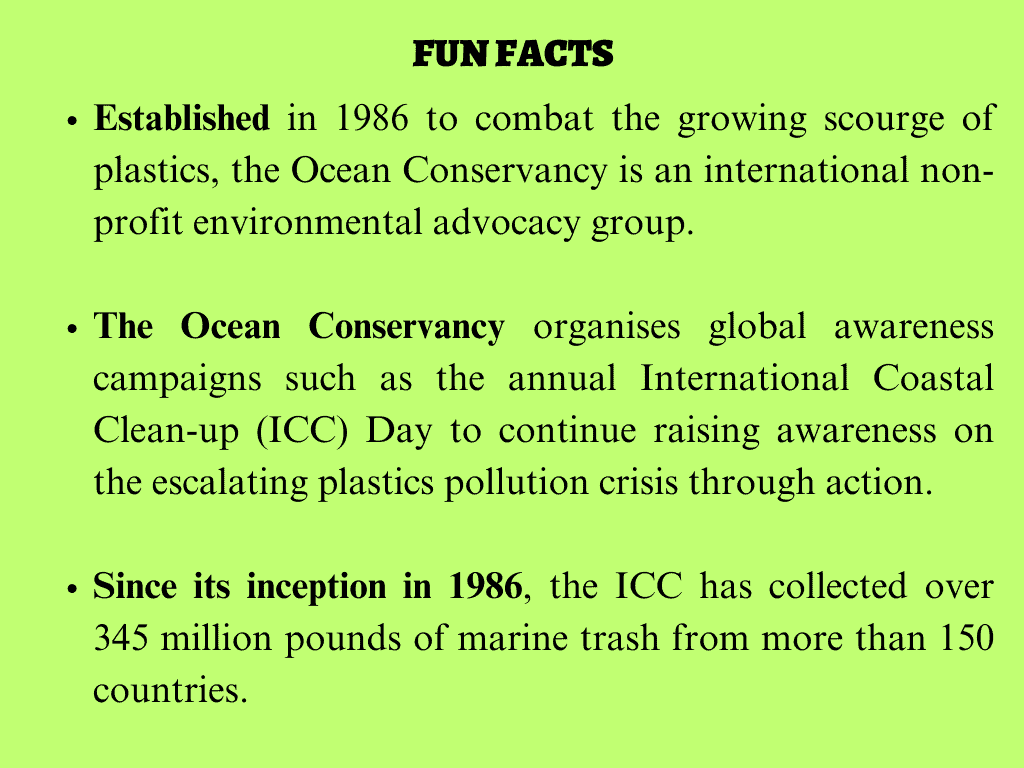
Increased Plastics Pollution
According to a 2019 scientific paper written by Clare Ostle and Richard C. Thompson, there has been a significant increase in ocean plastics from 1957 to 2020.
Key findings in the 2019 OECD Global Plastics Outlook Report corroborated the scientific findings as the report revealed that the amount of plastic entering the world’s oceans increased from 4.8 million metric tonnes in 2010 to 12.7 million metric tonnes in 2019.
But this amount is expected to almost double as a recent report published by the Pew Charitable Trusts in 2020 projected plastic pollution entering the world’s oceans to increase to 29 million metric tonnes by 2040.
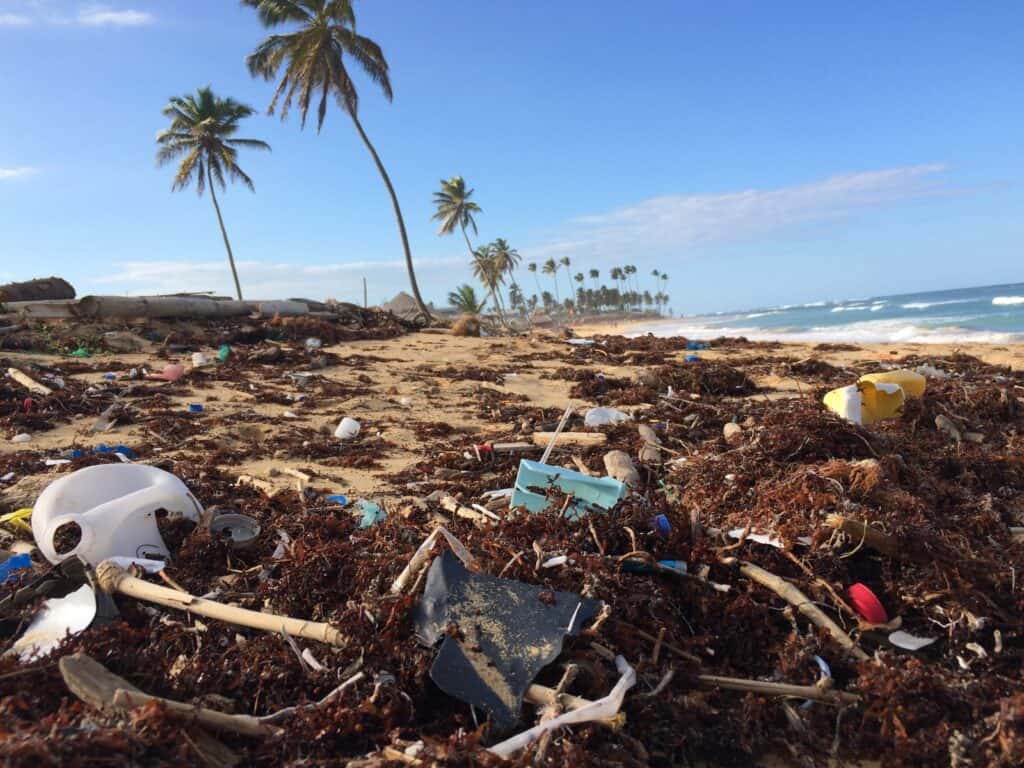
Trinidad and Tobago is no exception to the global issue of plastic pollution as plastic debris is found in and around many of the country’s beaches.
In 2022, a little under 2,800 pounds of plastic were collected by volunteers of the Ministry of Planning and Development during a beach clean-up at the Foreshore Highway in Port of Spain.
Six months later, 2,720 pounds of plastics were collected at the same site during an International Coastal Clean-up Day event.
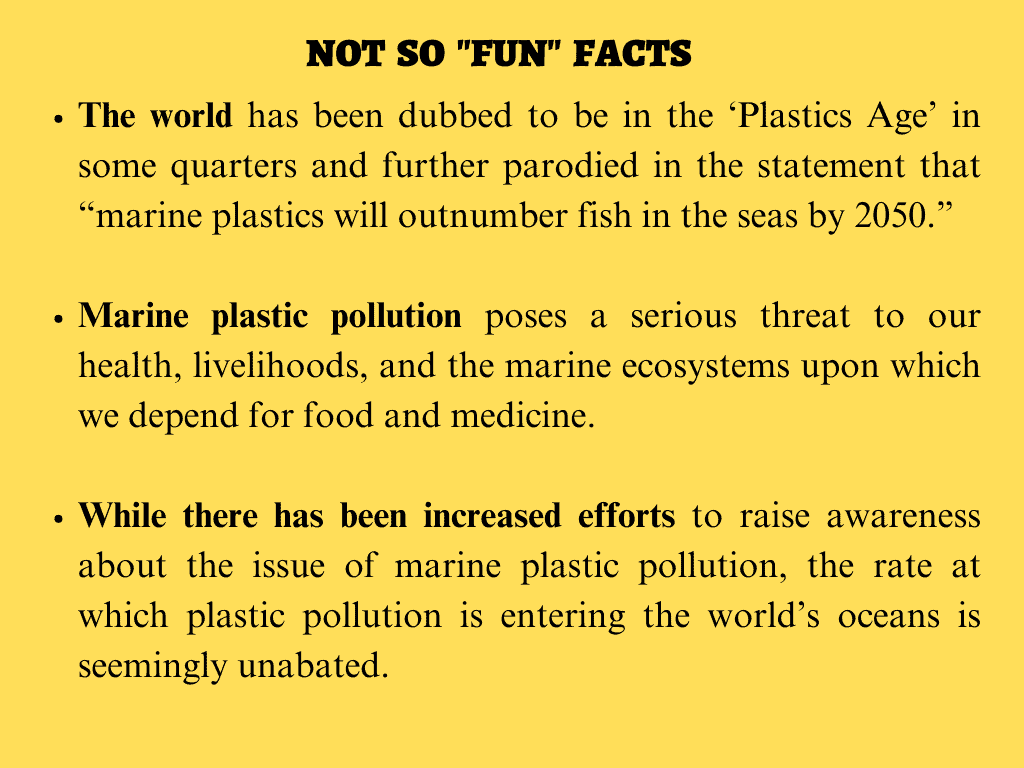
Can immersive virtual reality help reduce marine plastic pollution?
Traditionally, beach clean-ups, ocean literacy documentaries and school outreach programmes have been some of the tools used to educate younger generations about marine plastic pollution.
But is it time we consider the use of emerging technologies like Virtual Reality (VR)?
After all, the public perception of oceans, and their connection to it, will shape how they interact with it.
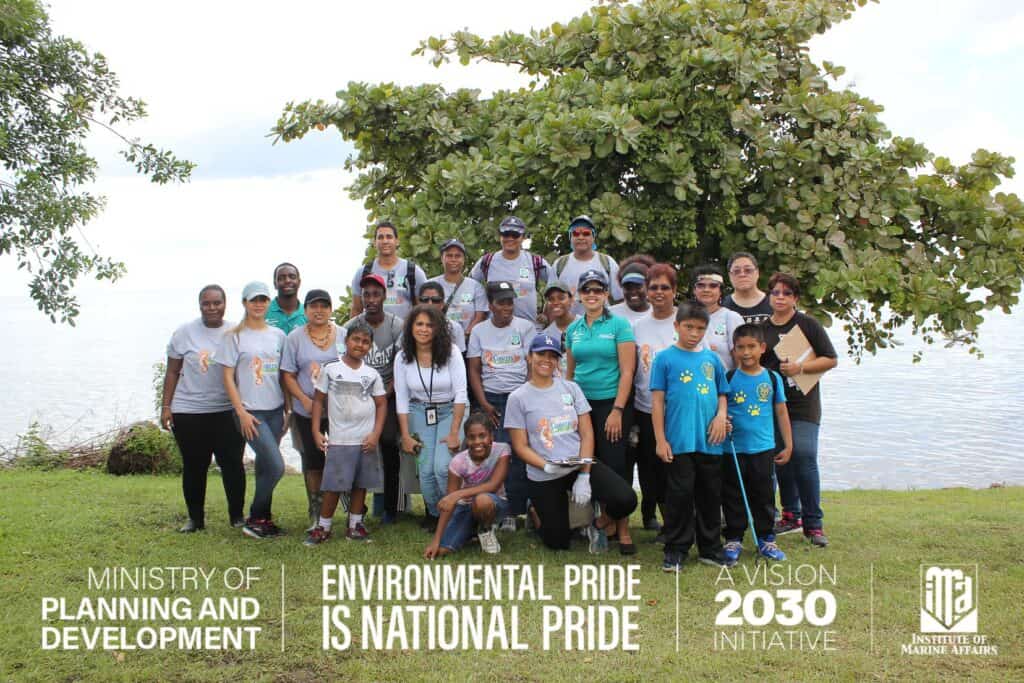
Some people may be unaware of how their daily actions – such as the regular use and indiscriminate disposal of single-use plastics – can adversely affect the ocean’s well-being.
For example, if one person thought it would be harmless to indiscriminately dump just “a plastic bottle” in a drain, they may not grasp the understanding that the bottle can end up in the sea.
The reality is that the discarded plastic bottle would not disintegrate but remain floating, joining other discarded plastics and perhaps be broken down into microplastics after a prolonged period.
In today’s technologically advanced age, virtual reality can be used to not only show a person the journey a plastic bottle takes to get to the ocean but also how it may look as it disintegrates over time and how animals that may potentially ingest its microplastics feel.
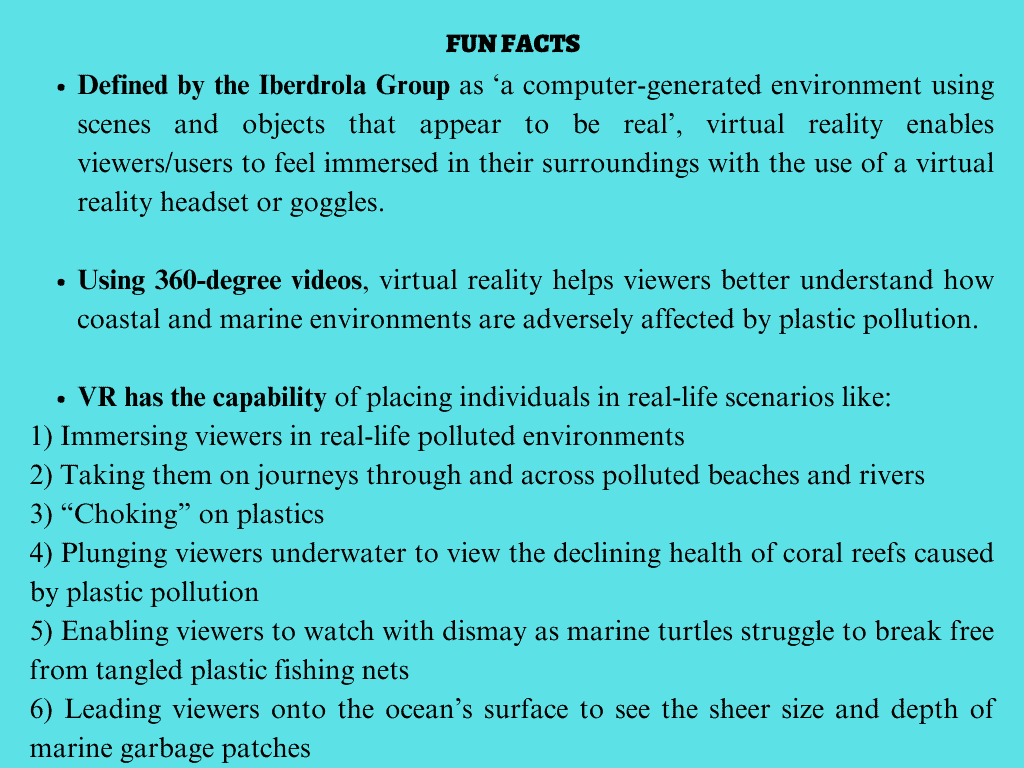
While virtual reality technology is likely to inspire viewers into action, it does not verify that it can challenge them to rethink their choices to lead ocean-sustainable lifestyles.
The technology encompasses several 90-degree and/or 180-degree videos which capture almost everything around, above, and below in the immediate environment with the use of a camera equipped with forward and rear-facing lenses.
This footage is then stitched together to produce a 360-degree video that is usually viewed with VR goggles or a headset and activated with head movements.
The internet is replete with virtual reality 360-degree videos on plastics pollution and can be viewed with most Android smartphones and iPhones, as long as these can fit into the virtual reality headset.

Virtual reality games like ‘Bleached Az’, engages players to meet the goal of slashing as many plastics and trawler nets to protect coral reefs in the game.
Awareness campaigns may require using technological software and gadgets which are used by the next generation whose lives will be affected the most in decades to come.
In line with its mandate to the Government of Trinidad and Tobago, the IMA continues to support the reduction of plastics pollution through its applied and scientific research which includes ongoing monitoring of the country’s marine and coastal environments.
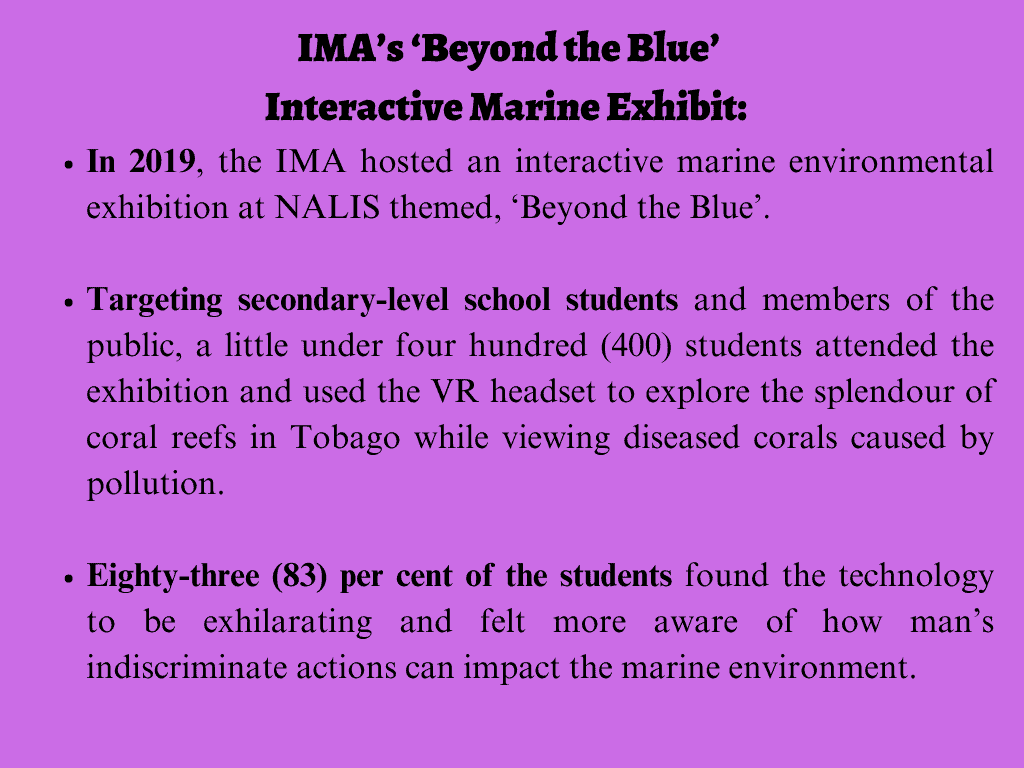
The IMA is the Regional Activity Centre (RAC) for the Cartagena Convention with responsibility to address land-based sources of pollution.
This responsibility aptly aligns with Societal Outcome No. 1-1 of the United Nations Decade of Ocean Science for Sustainable Development 2021-2030, which states, ‘a clean ocean where sources of pollution are identified and reduced or removed.’
The IMA also plays a pivotal role in developing the Integrated Coastal Zone (ICZM) Policy, which addresses, inter alia, pollution controls and waste management with minimal impact on human and coastal ecosystems.
“When next you go on that idyllic beach getaway and your eyes stray to heaps of marine plastics or debris strewn across the sand, you have two options from which you can choose; do nothing using the ‘business as usual’ approach, or, do your part in refraining from the use of single use plastics. Implement the five Rs of Refuse, Reduce, Reuse, Recycle, and Repurpose and spread the word!”
Lorraine Barrow, Librarian at the Institute of Marine Affairs
